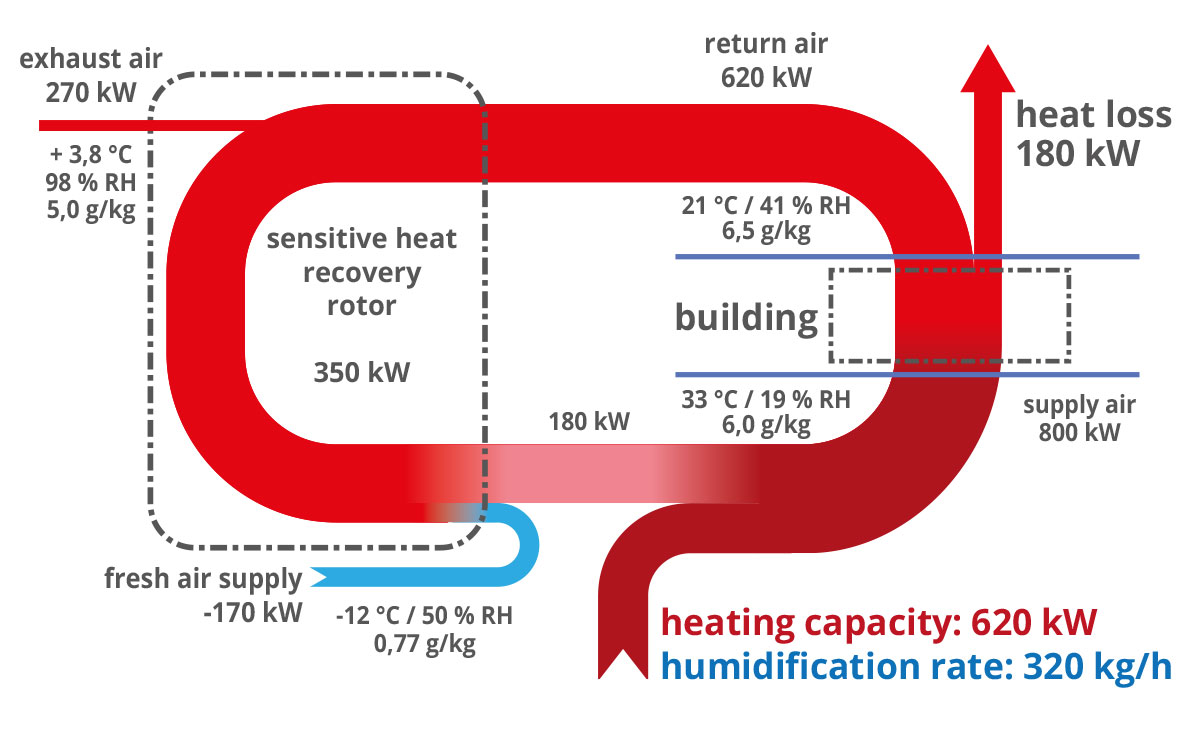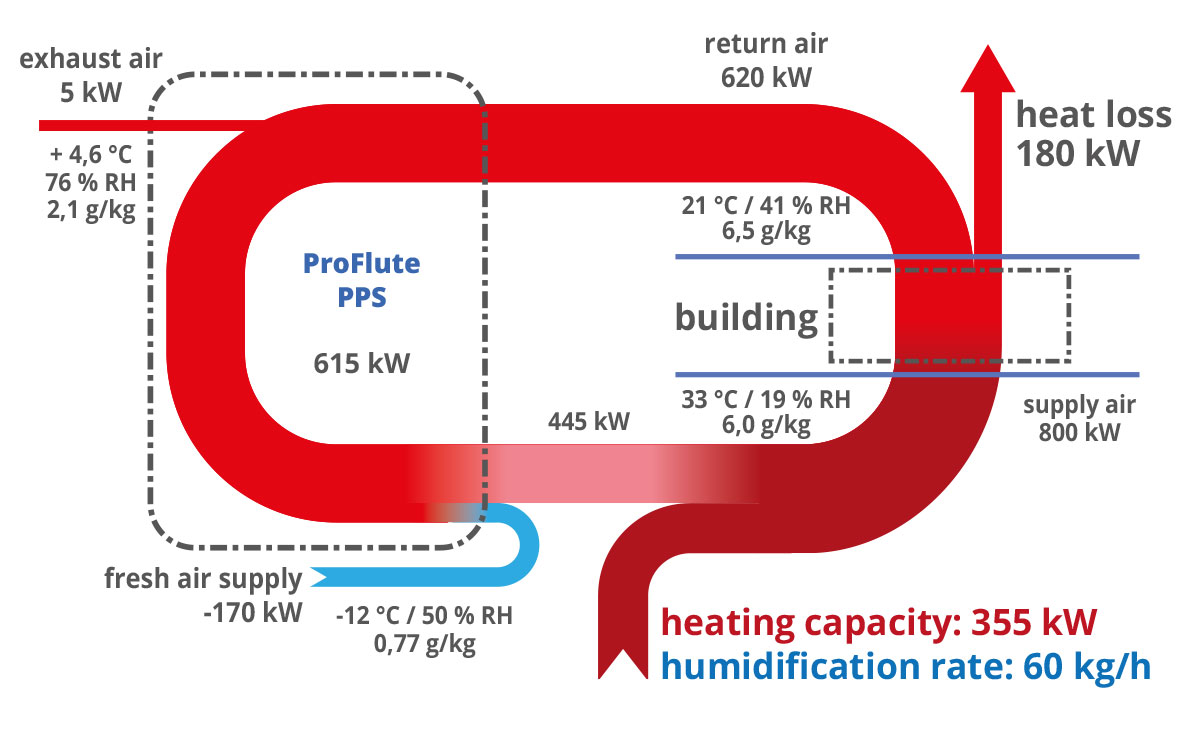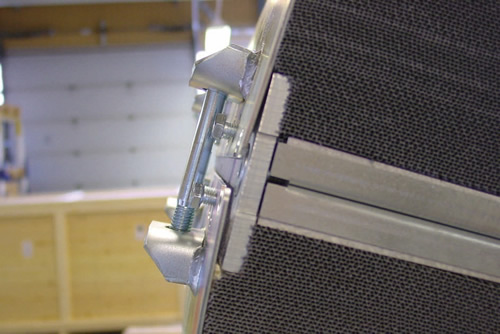Due to rising energy costs, the recovery of energy from the exhaust air in air conditioning systems is becoming more important. Previously, the recovery of sensible heat was considered adequate. At low humidity ambient air conditions in winter not only specially treated water is required to condition the air, but also the heat of condensation must be supplied.
Example: air conditioning system with 50.000 m³/h incoming & exhaust air
design data, winter conditions:
air mass flow: 60.000 kg/h
required room temperature: 21 °C / 40 % RH
building heat load: 180 kW
building moisture load for approx. 200 persons: 30 kg/h
calculated at an elevation of 400 m above sea level
The diagrams show the energy content (enthalpy) in the different air streams.
1) Conventional System with Sensitive Heat Recovery, Rotating Exchanger
The energy content in the exhaust air is 620 kW; the moisture transport is 360 kg/h. Note: As the rotor is operating under condensing conditions, also some moisture (90 kg/h) is recovered. The total energy recovered is 350 kW.
The energy content sent out with the exhaust air (60.000 kg/h at 3,8 °C / 98 % RH / 5,0 g/kg) and therefore lost is 270 kW.
To achieve the desired supply air conditions of 33 °C und 6,0 g/kg the air conditioning system needs to supply:
sensible heat: 620 kW
demineralized water: 320 kg/h
2) Desiccant Rotating Exchanger ProFlute PPS
Also in this case the energy content in the exhaust air is 620 kW and the moisture is the same 360 kg/h. But due to the recovery of both sensible and latent heat in through the desiccant rotor ProFlute PPS it is possible to recover 615 kW.
The energy content sent out with the exhaust air (60.000 kg/h now at – 4,6 °C / 76 % RH / 2,1 g/kg) and therefore lost is only 5 kW.
To achieve the desired supply air conditions of 33 °C und 6,0 g/kg now the air conditioning system needs to supply only:
sensible heat: 355 kW, a reduction of 260 kW or 43 %
demineralized water: 60 kg/h, a reduction of 260 kg/h or 81 %
Just multiply your plant cost for 1 kWh of heat and kg of demineralized water with the differnce you can save during winter operation and you see why using ProFlute PPS Rotors for energy recovery is economical. (Note: to get an estimate of the savings over the entire heating period just use the entire time of winter operation in hours and half the savings in heat and demineralized water.)
Rotor Technology ProFlute PPS
If you calculate only initial cost you can also buy cheap rotors made of cellulose oraluminum honeycomb with thin silicagel coating, just renew quite frequently. But when considering lifecycle costs you must insist on rotors maintaining their good efficiency over a lifetime of more than 10 years, then the PPS Desiccant Rotor from ProFlute the right product for you. These rotors have been proven in dehumidification, where they are exposed to heat much more: The temperature difference between dehumidification and reactivation sector there is about 100 °C – and the rotors keep their mechanical stability and performance for well over 10 years, proven in more than 15.000 installations worldwide.
The special design of ProFlute PPS rotor drums make them stable for a long lifecycle. The drum construction ensures that the desiccant material is not mechanically stressed. And when replacing a rotor in an existing installation assembly and sector alignment of the new rotor in the existing rotor box is easy to do.
Picture: detail, adjusting and tightening of rotor segments (screws to be tightened)


